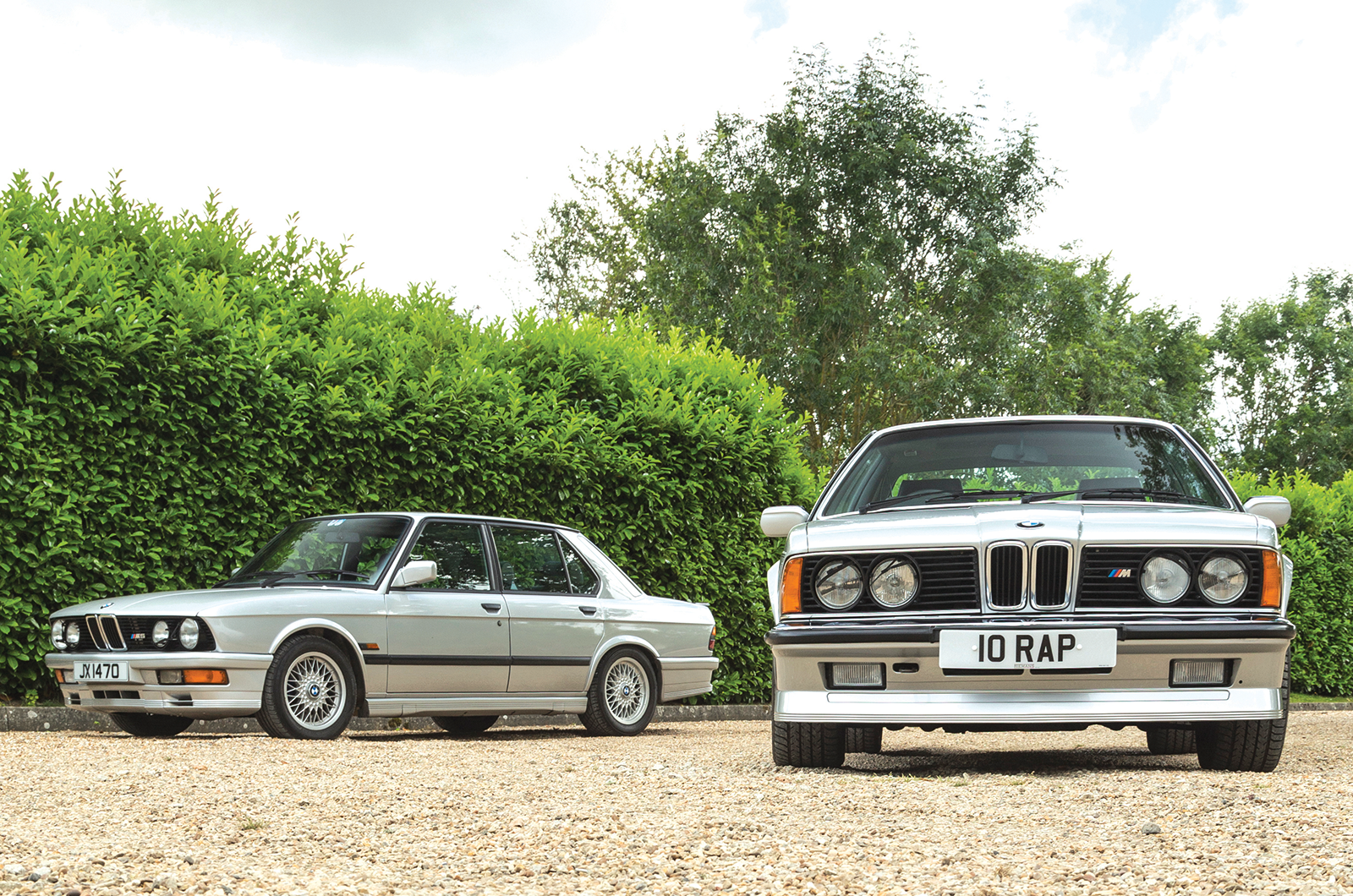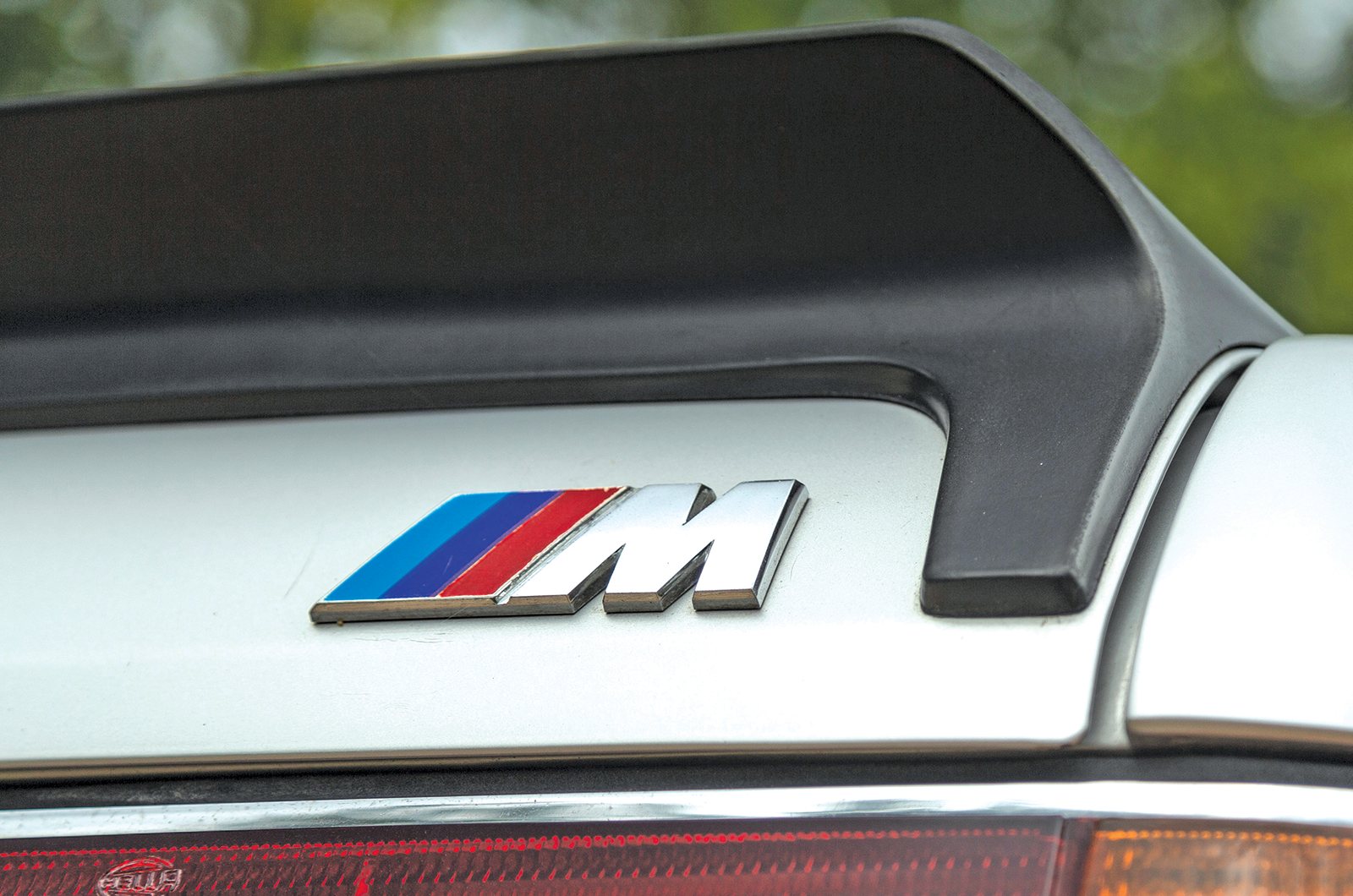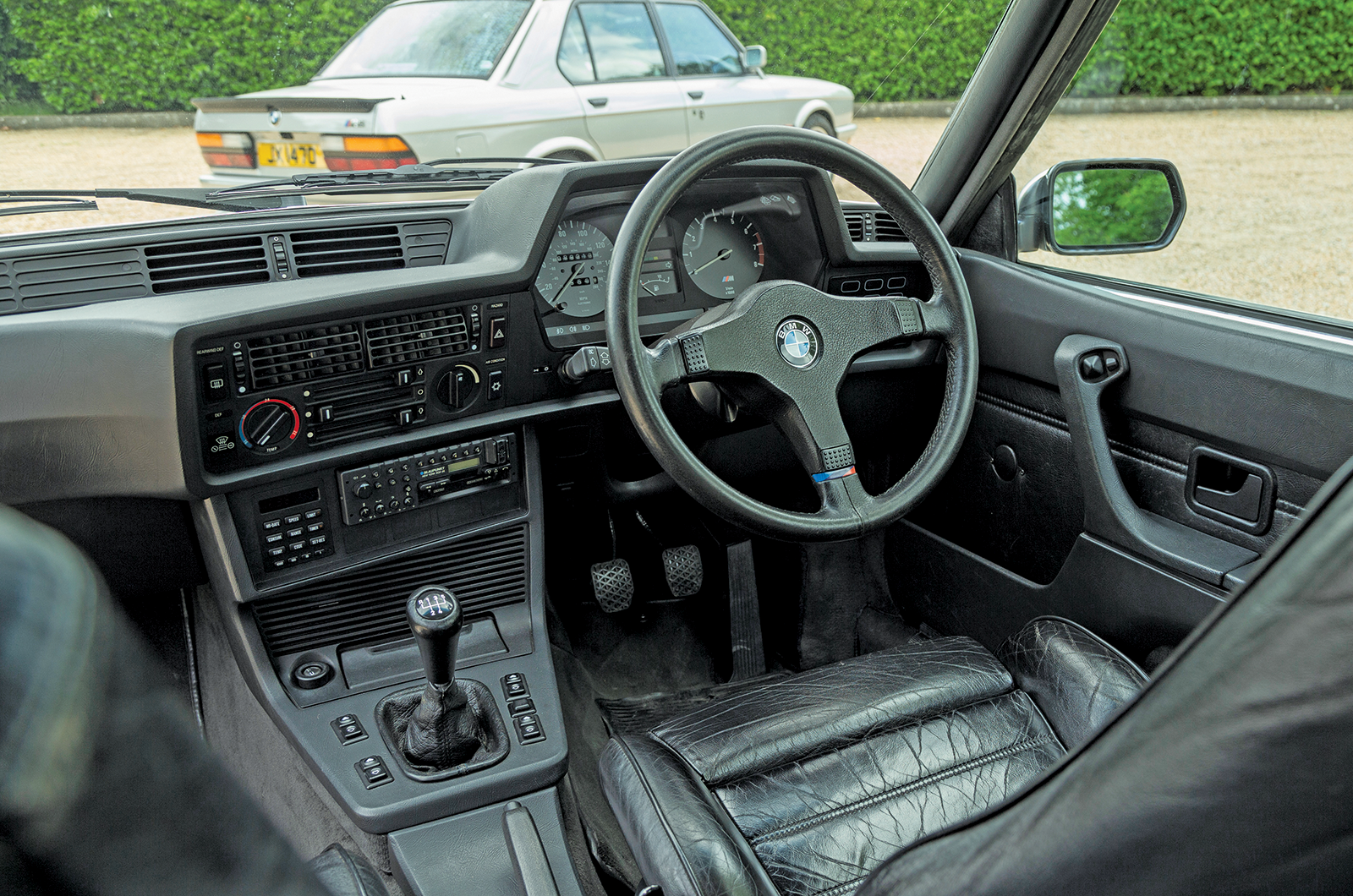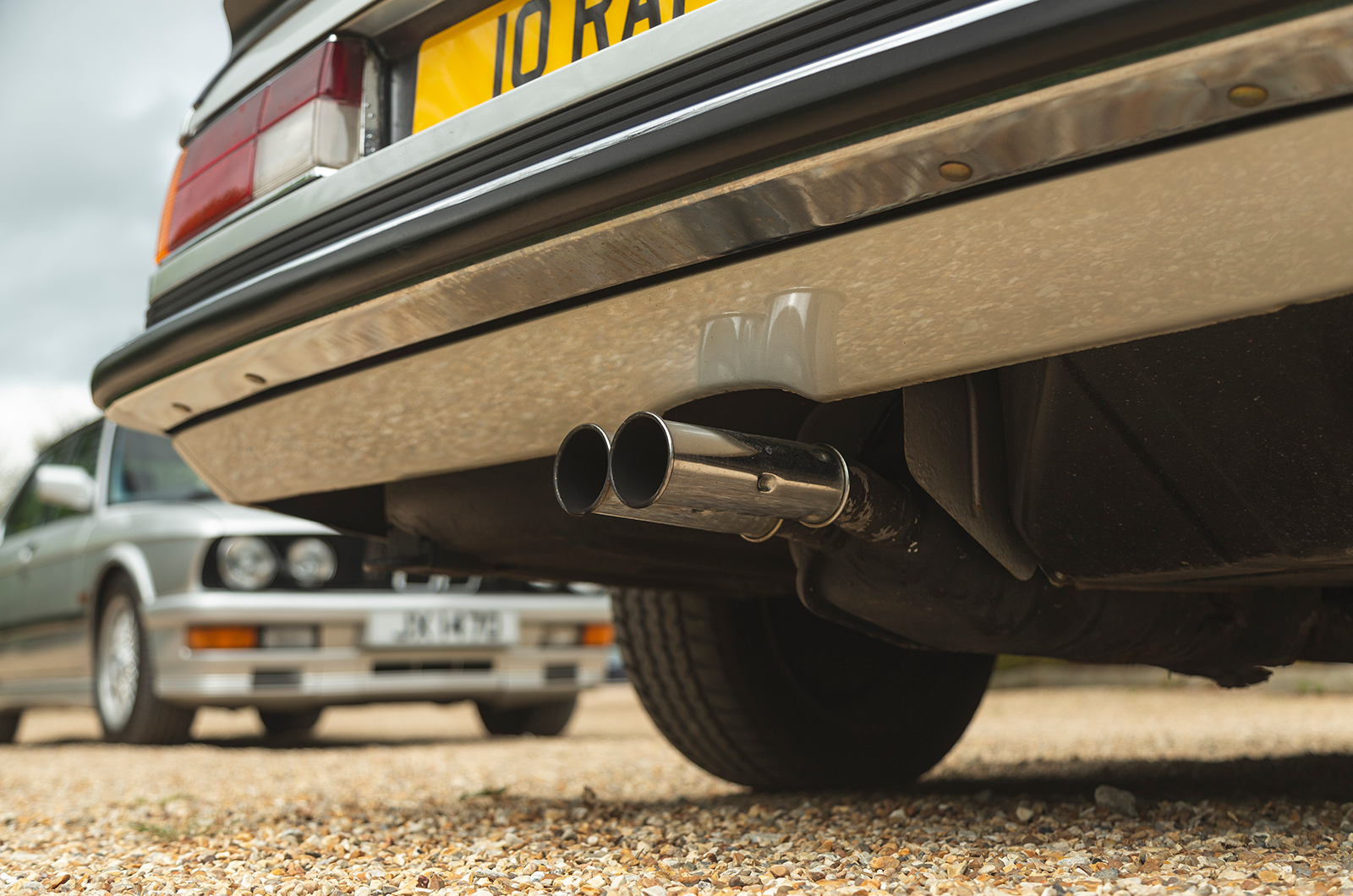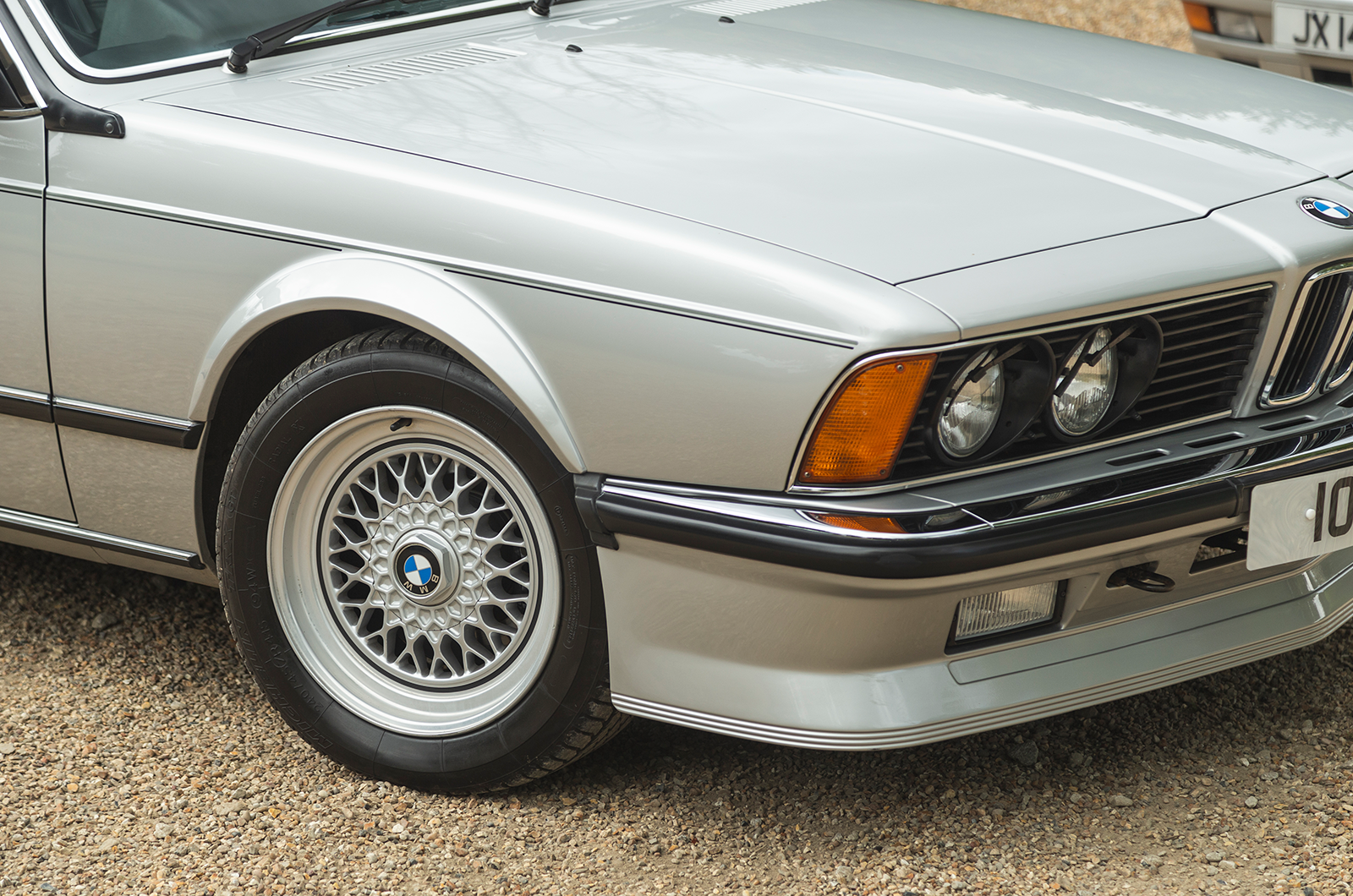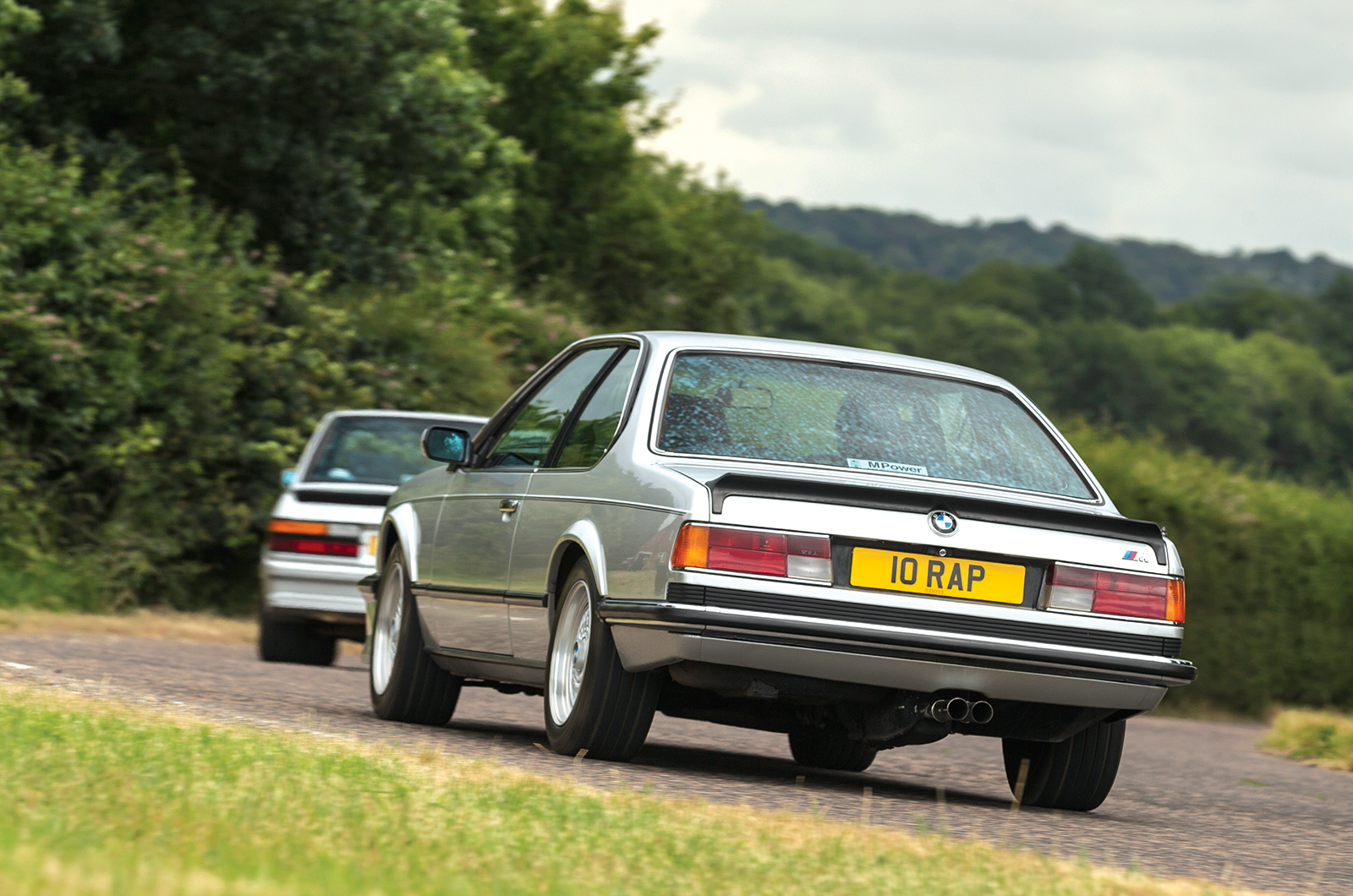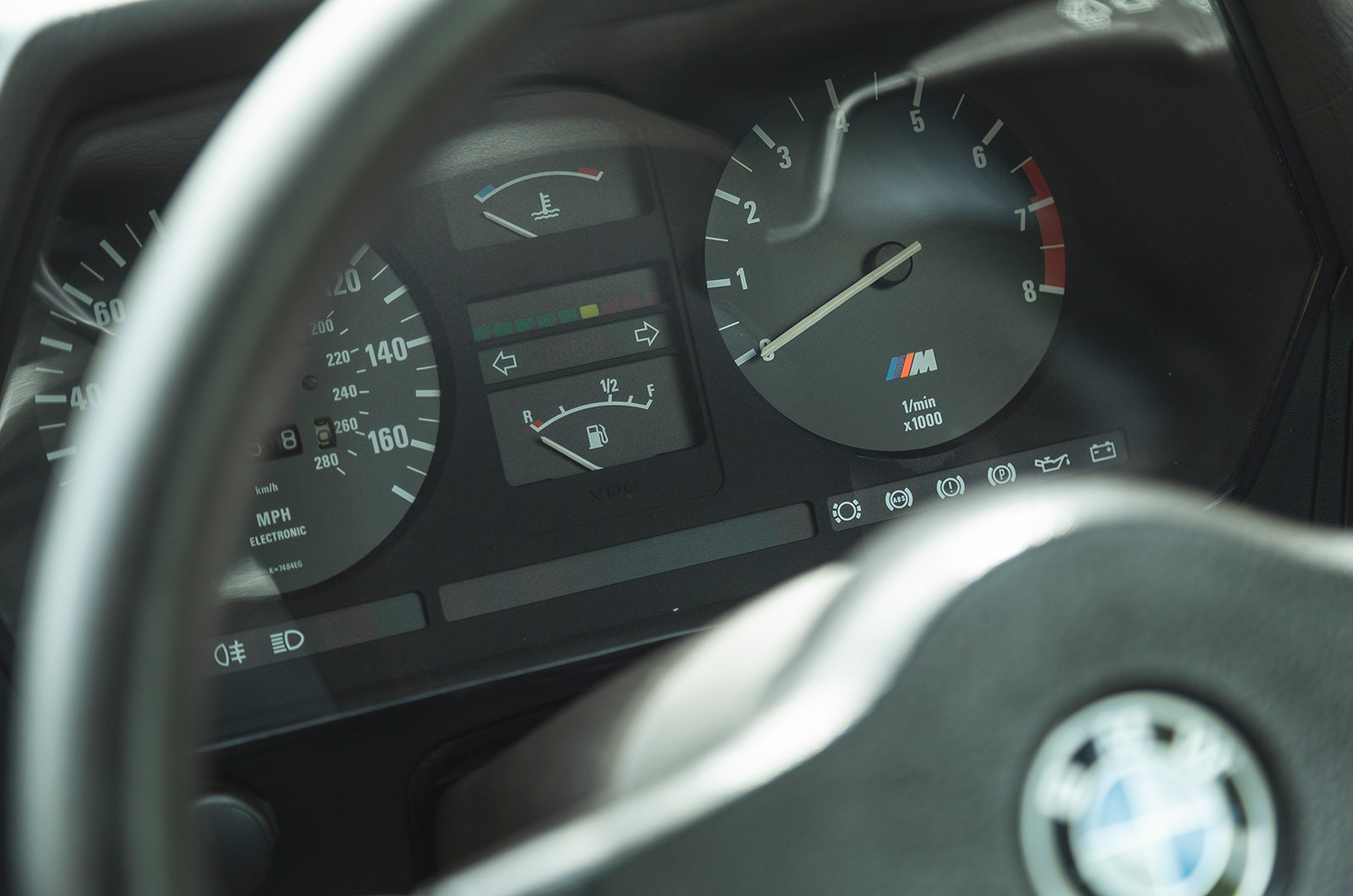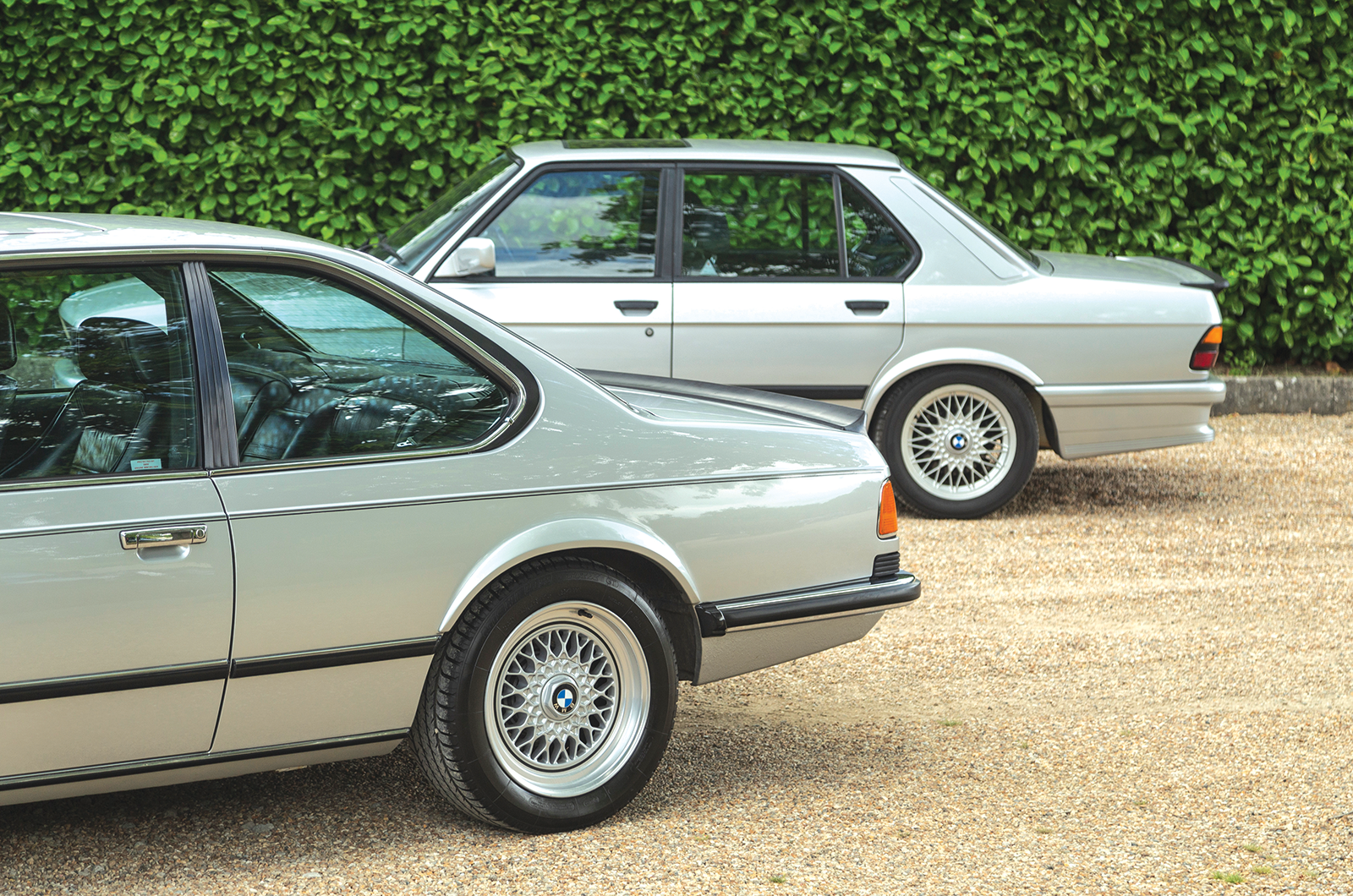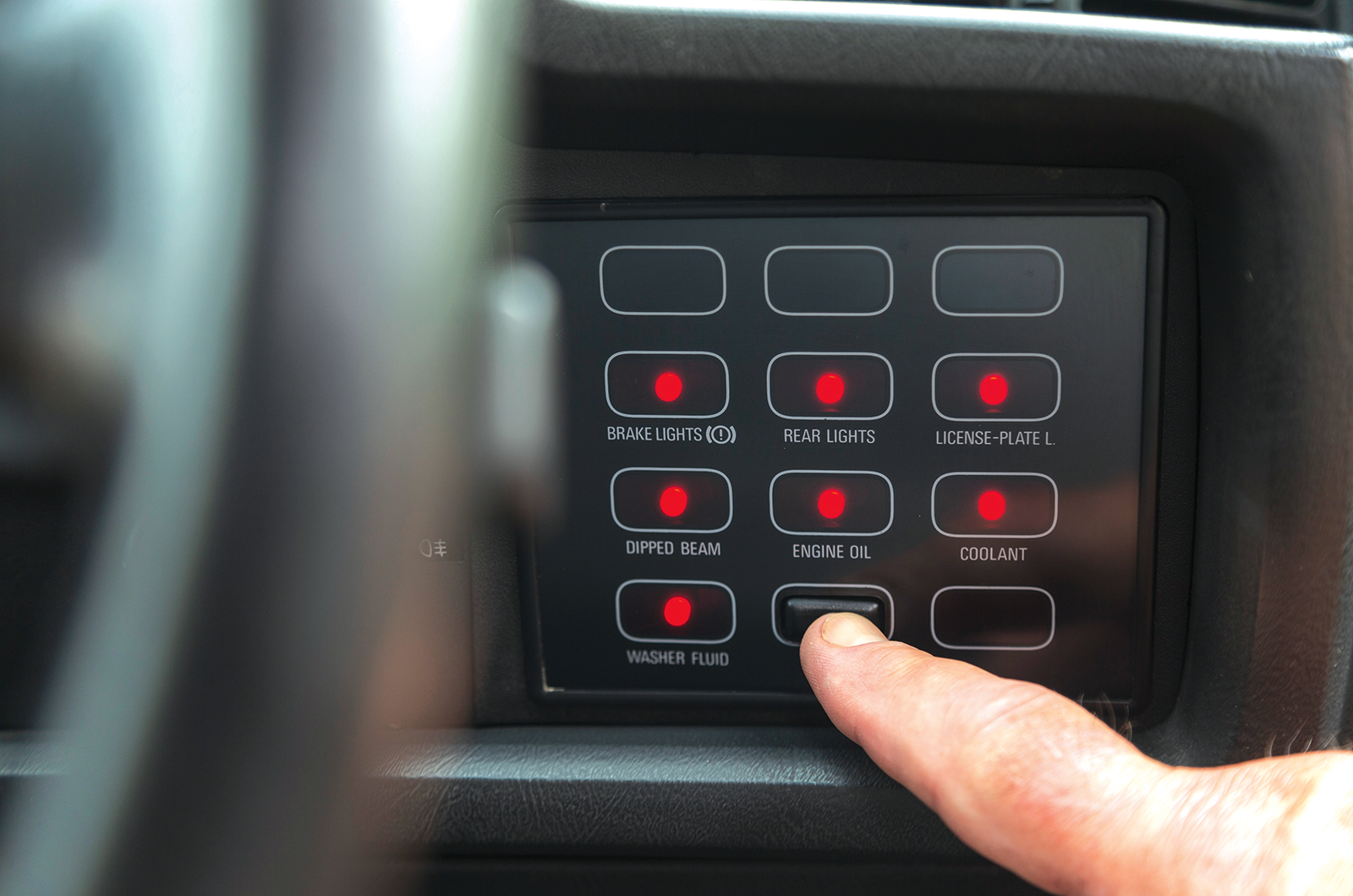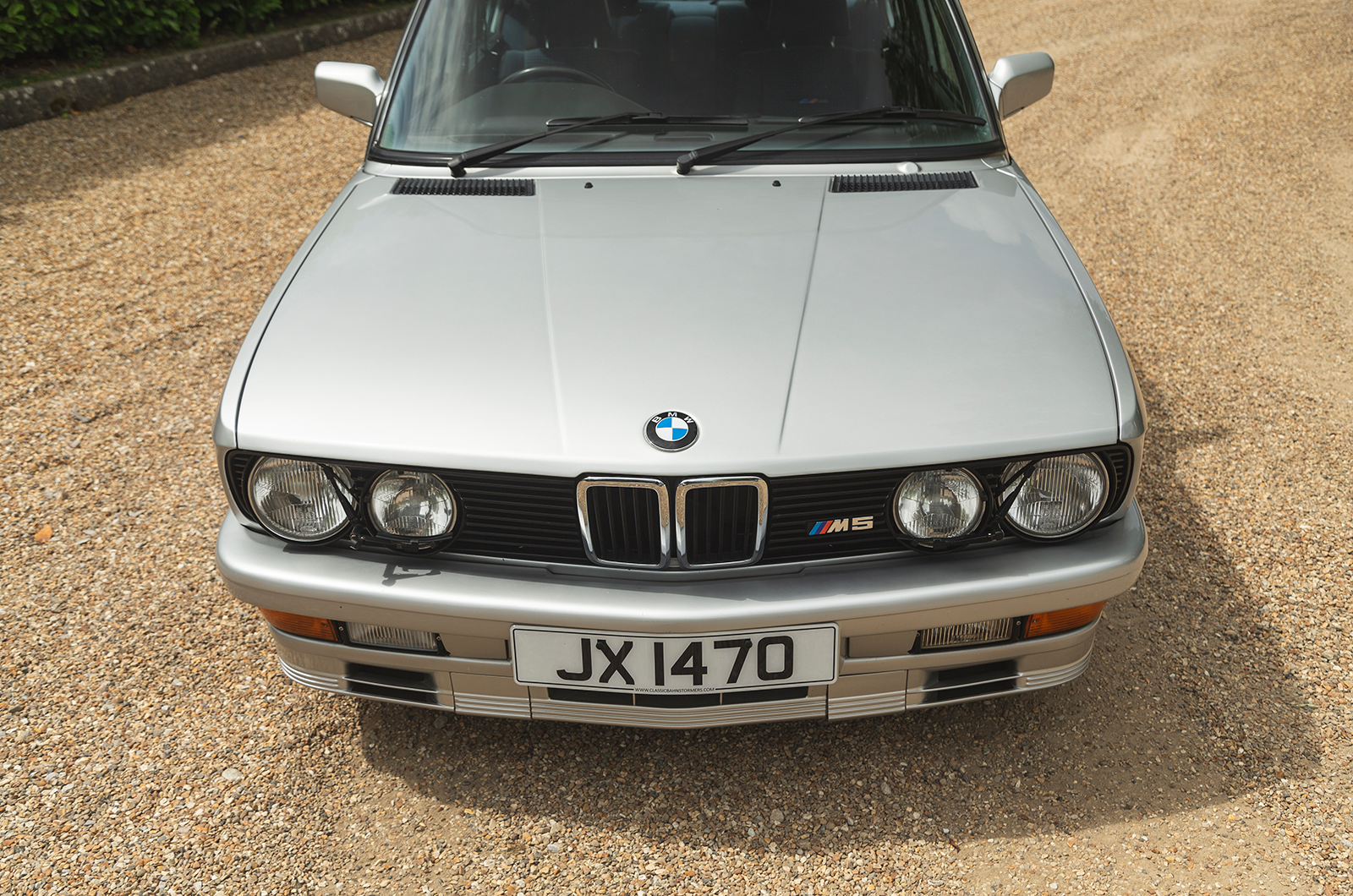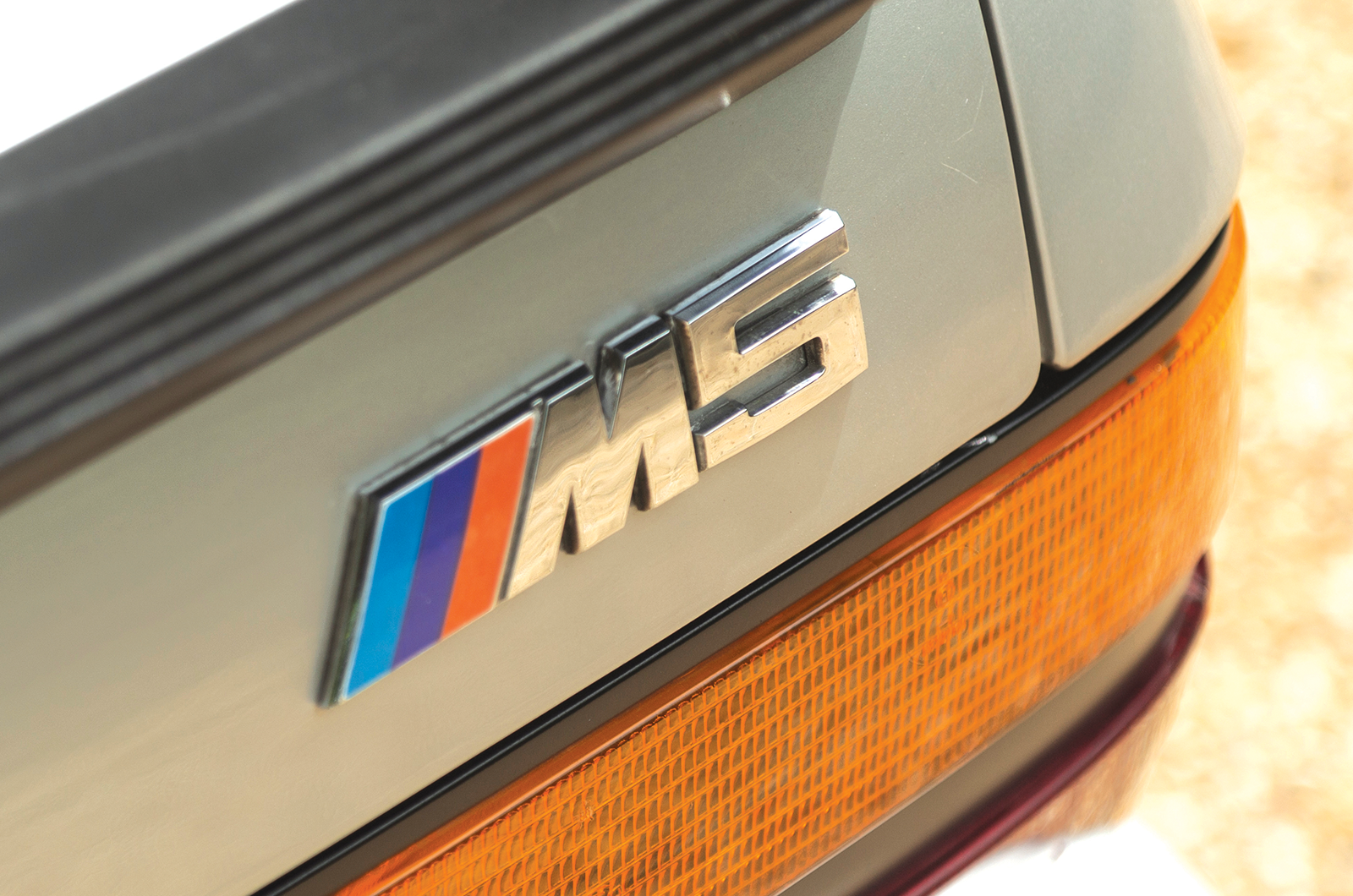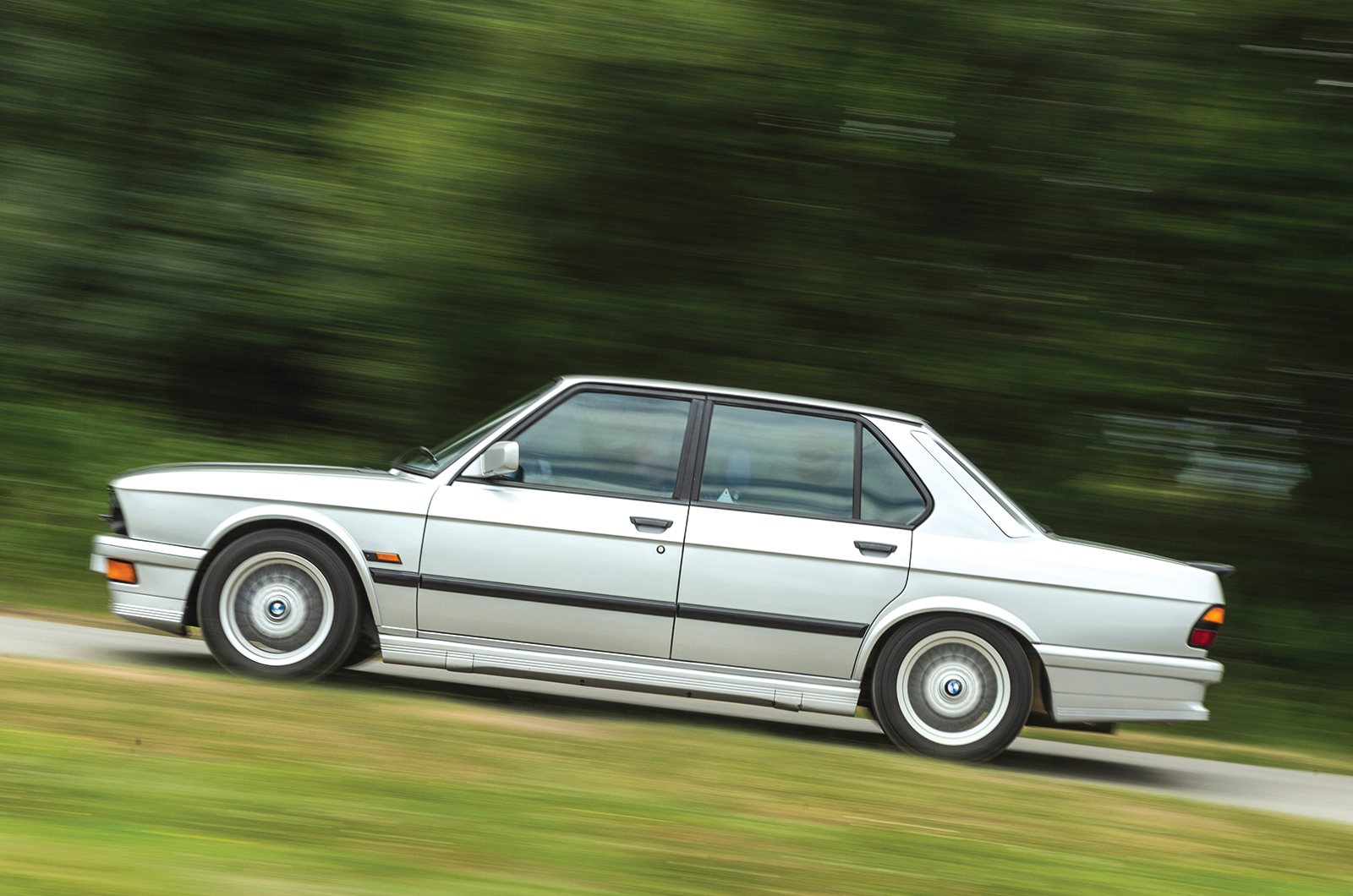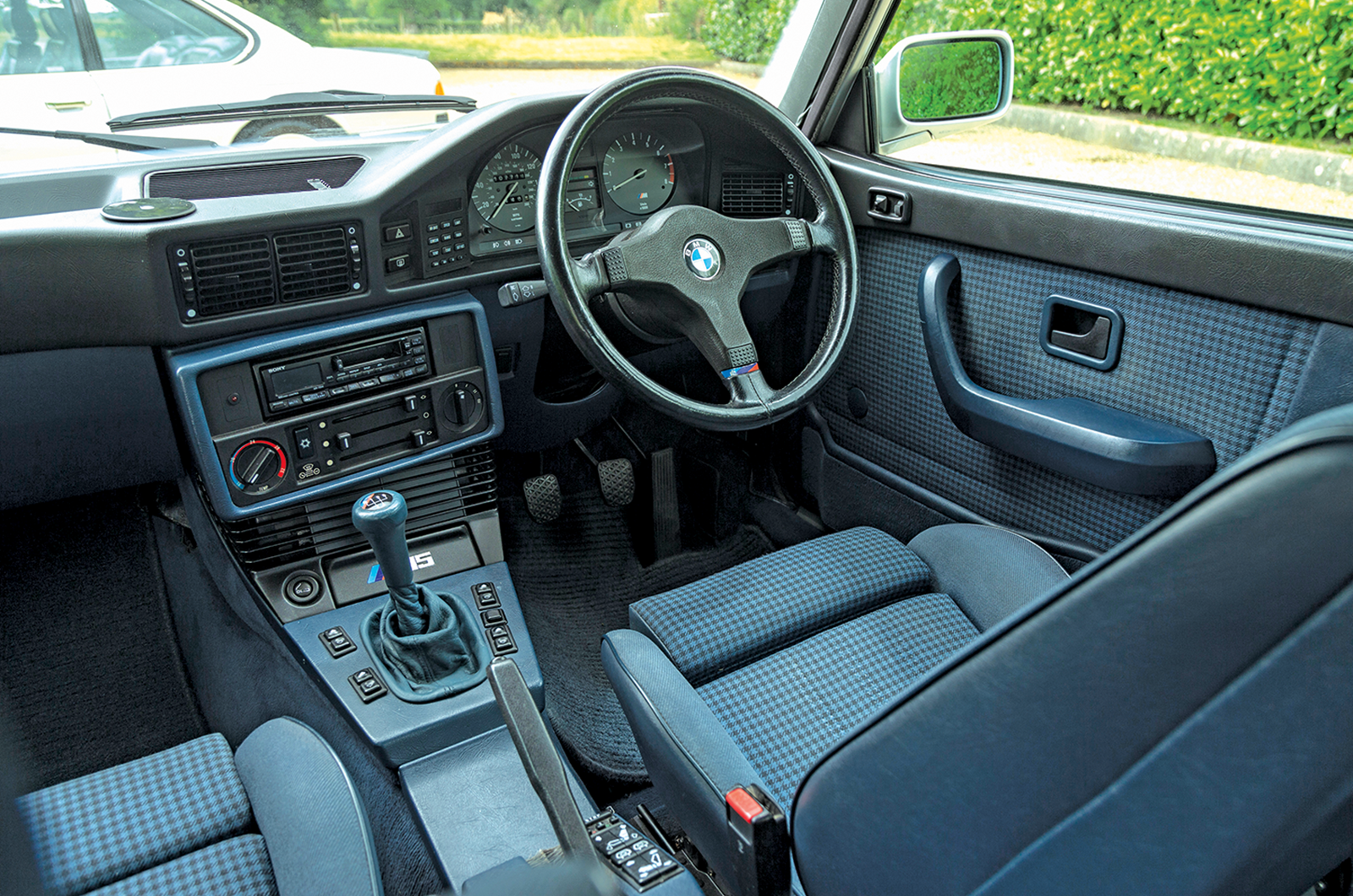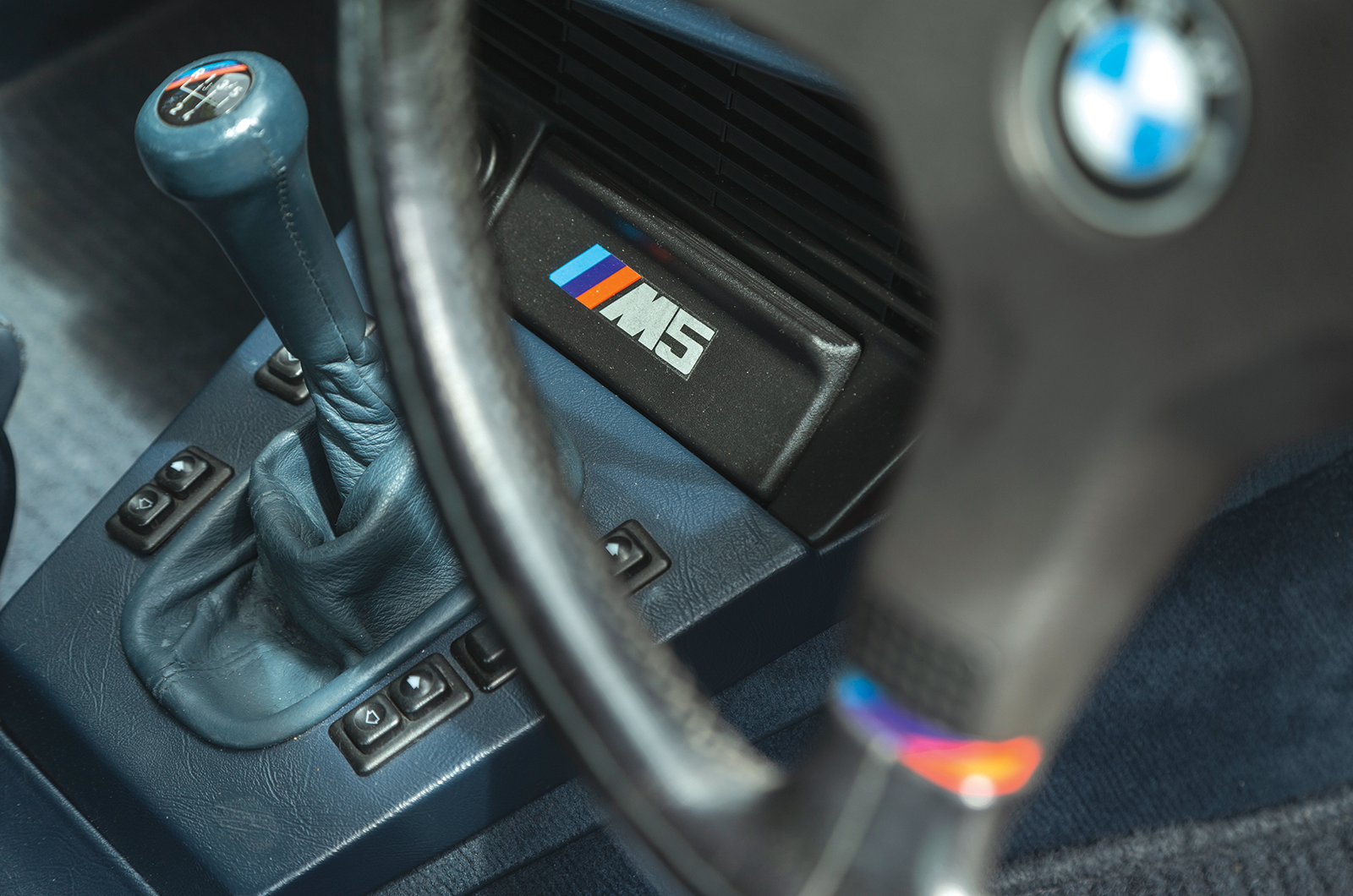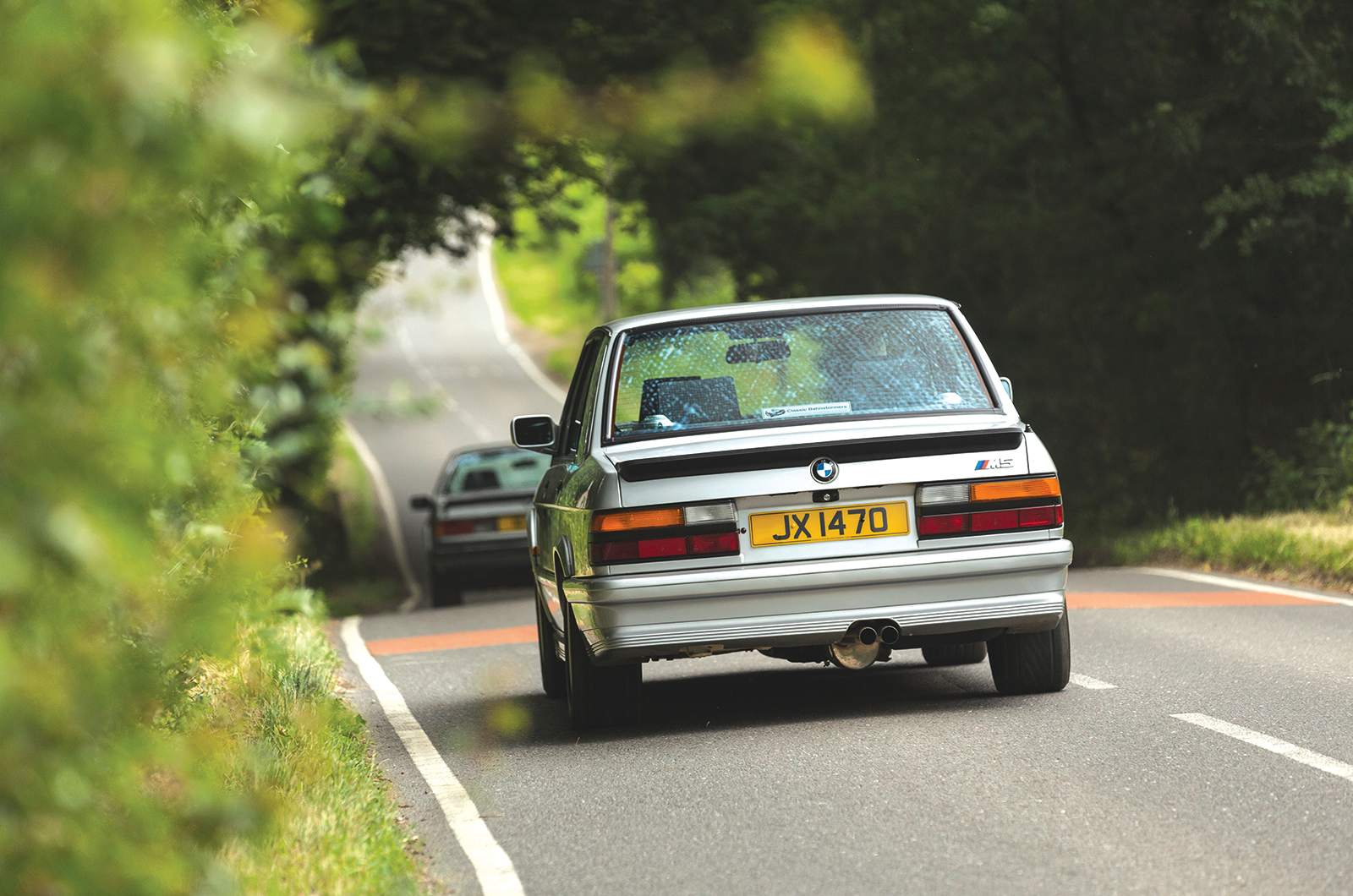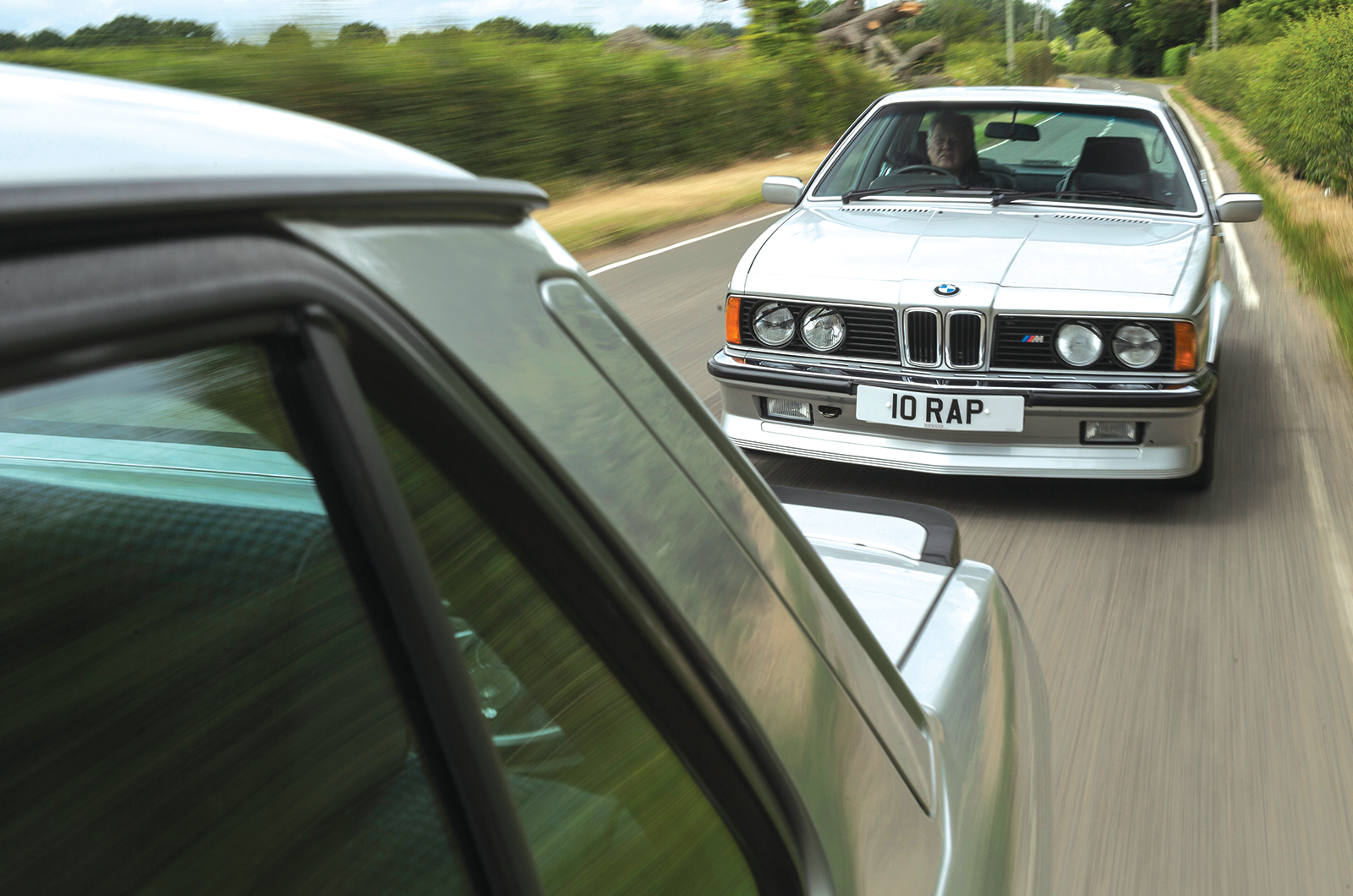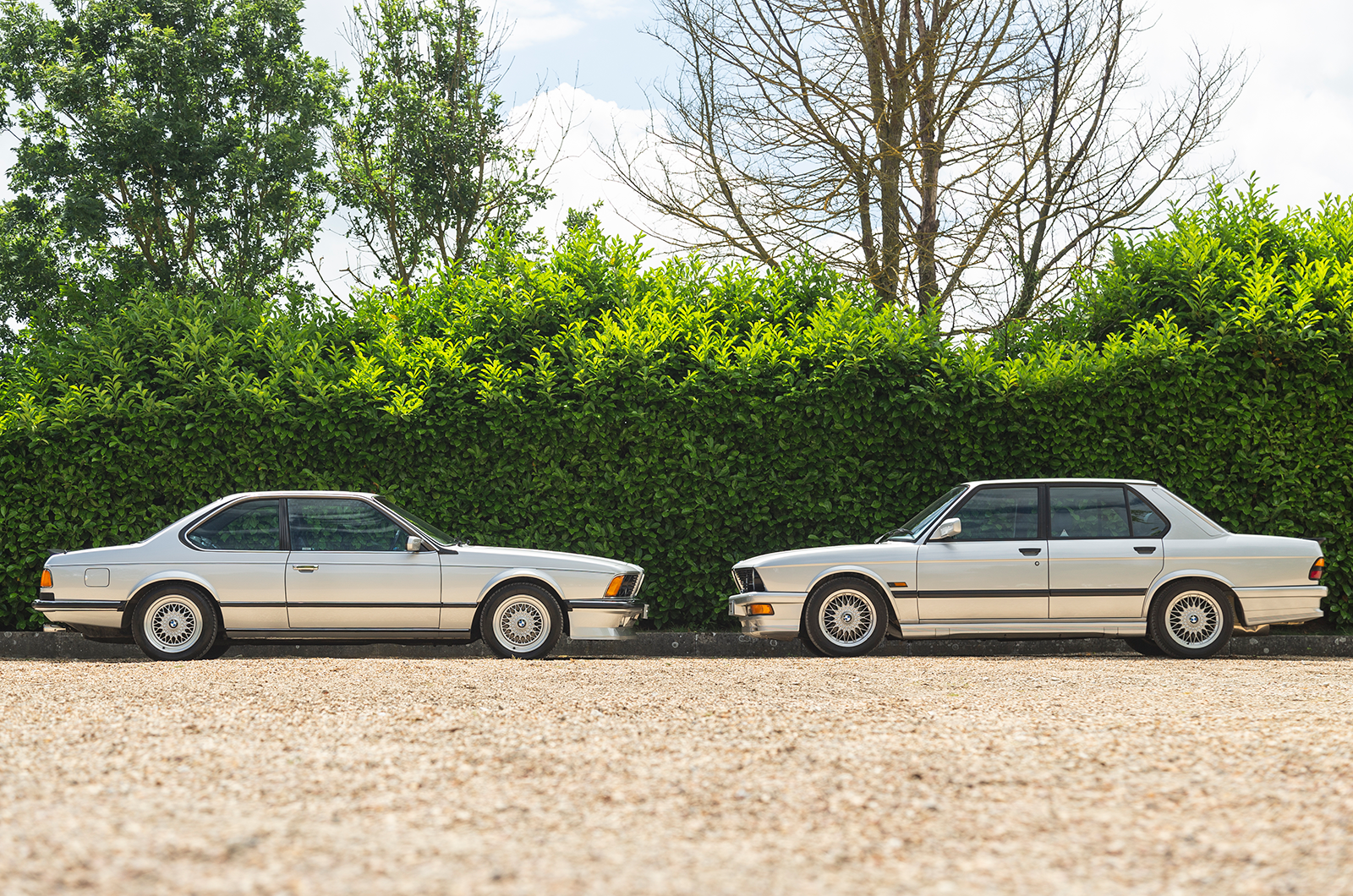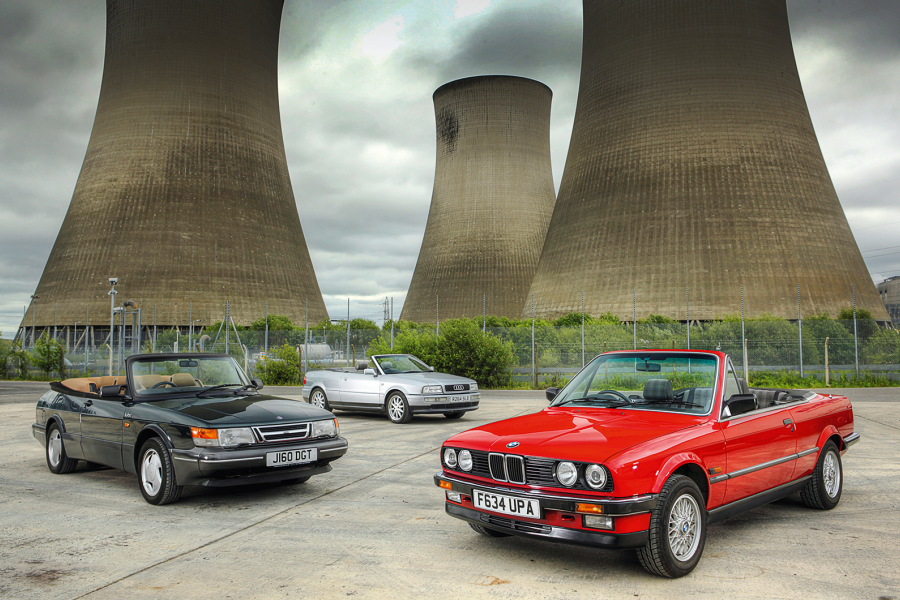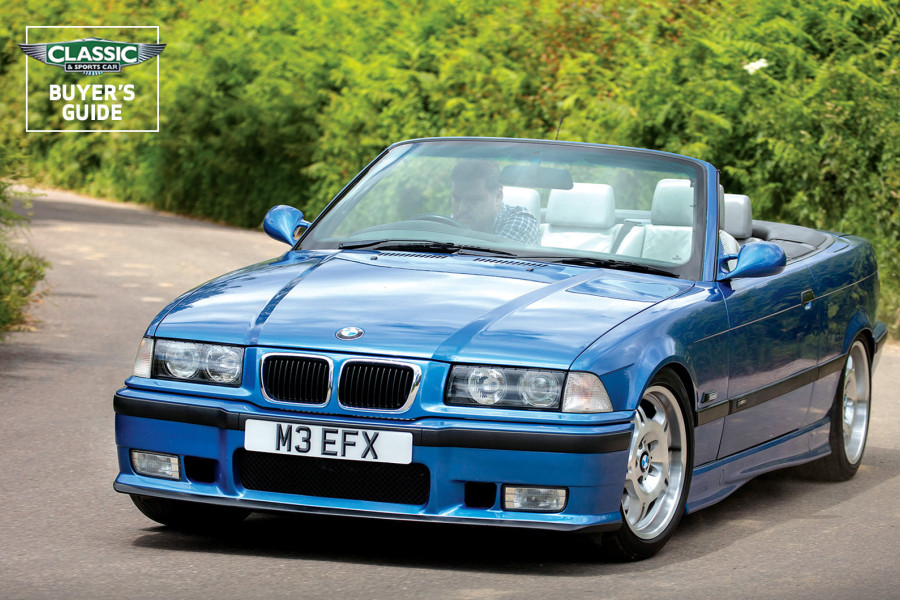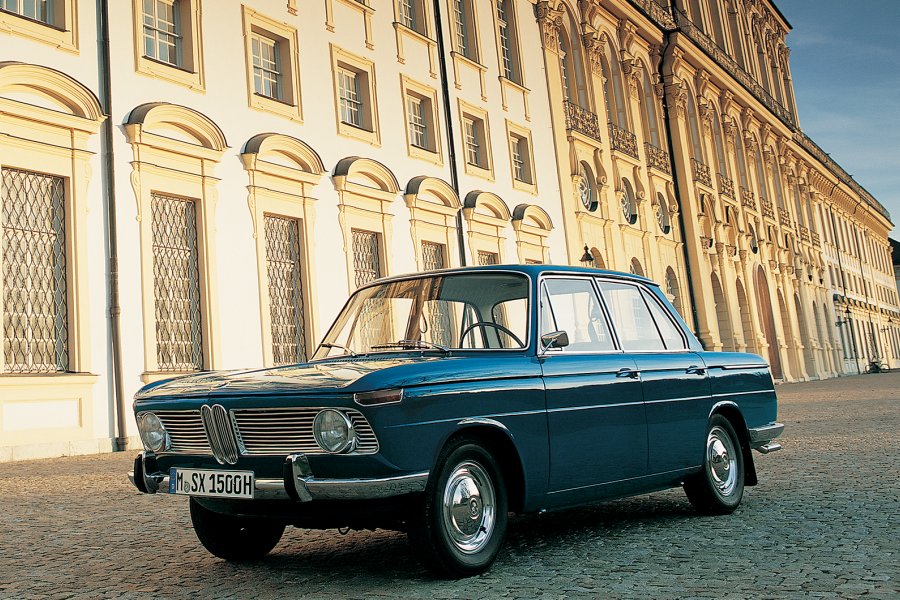On the move, you sense that the M635 is the heavier car – which it is, by 150lb. Certainly it is a gentler machine than the M5, with a more suave demeanour than the ever-so-slightly hooligan four-door saloon, a car that would not look or feel out of place taking part in a suburban Post Office armed robbery.
The now-classic E28 M5 was once the world’s fastest four-door saloon
Not so the M635CSi. As the firm’s flagship road machine, it was probably deemed prudent to put the emphasis on civility in a car that would appeal to richer, older customers than the M5.
Both are easy to drive smoothly, bereft of driveline shunt and with easy to control – if rather heavy – clutch and throttle pedal inputs.
The pleasingly consistent, shock-free steering also feels quite heavy, while the four-wheel disc brakes are good, but just a shade less pokey than their specification promises.
BMW’s neat dashboard layout (left) was the envy of rivals; tri-colour details (right) adorn the M5’s cabin
The M88 unit is as silky, flexible and even-sounding as any other BMW straight-six, although the tone of cultivated mechanical throatiness emanating from their large-bore tailpipes tells anyone with the necessary empathy that there’s something special moving these big BMWs down the road.
In both cases, it is the way this magnificent engine winds out so strongly from 4000rpm to its redline that is so thrilling, with no obvious ‘step’ in the power delivery.
Easily roused, it lunges these cars forward with a fierce, turbine-like whistle and a frantic, relentless gathering of pace.
The BMW M5’s Recaros are firm but highly adjustable
First gear takes you to past 40mph, second to just shy of the legal limit and third to something over the ton.
Using the full, scalp-prickling 7000rpm, you could be travelling at 130mph in either car before selecting fifth – a situation that can be presented in less than half a minute from rest.
Apart from a longish movement into bottom gear, the Getrag ’box – with fifth on a dogleg – is slick, accurate and hard to fault: you find yourself looking for excuses to use it.
Near-centrally mounted twin tailpipes protrude from the BMW M5’s rear bumper
With identical final-drive and gear ratios, the marginally lighter M5 might be a shade more lively, but the impression is of a slightly harder-feeling car.
Both of these BMWs ride firmly – by 1980s standards – on their Bilstein dampers, but they are nowhere near what you’d describe as harsh, while never being floaty or flabby.
Perhaps the extra weight of the coupé takes the edge off the way the wheel movements are checked, but poor surfaces do not take away from your ability to corner rapidly in either car.
On the road, the M635CSi (behind) is a little softer than the lighter M5
Somehow, BMW managed to dial unerring straight-line stability into their speed-sensitive power steering while maintaining superb turn-in.
The E24 and E28 M-cars hold understeer and body roll in abeyance to a level that allows you to urge them along very quickly.
There is a gear for every eventuality in the closely stacked ’box, and abundant torque to balance the attitude of the car just where you want it.
Flared wheelarches dress both M-cars, joining the 415mm-diameter split-rims of the M635CSi and the M5’s optional bodykit
Lairy, easily held powerslides – a recurring theme of effusive M5 and M635CSi magazine road tests in the ’80s – feel as if they are a downchange and a twitch of the right foot away, should you wish to indulge.
For every reason you can imagine, I elected to give such heroics a miss, but the option is there for those with the nerve and skill to fully exploit these finely honed examples of the way BMW fed its hard-won competition nous into the cars it sold to the public.
These are very fast, very forgiving cars that might not want to put you backwards into a hedge or across a field, but offer no electronic insurance against such an eventuality should your luck, ability or judgment – or the weather – fail you at the critical moment.
‘Lairy powerslides feel as if they are a downchange and a twitch of the right foot away, should you wish to indulge in them’
Prettier cars have come out of Munich before them, and faster ones since, but I cannot think of any others that so perfectly encapsulate the spirit of what the firm, at its ’80s best, was all about.
Not preening exotica or hoodlums’ street racers, but well-groomed, well-wrought cars with a bright halo of competition pedigree.
More than just transport but essentially practical, the M635CSi and M5 were high-performance BMWs built for mature adults, with business to attend to but nothing to prove.
Images: Luc Lacey
Thanks to: David Rapoport
Factfiles
BMW E28 M5
- Sold/number built 1984-’88/2241
- Construction steel unitary
- Engine iron-block, alloy-head, dohc 3453cc ‘six’, Bosch fuel injection
- Max power 286bhp @ 6500rpm
- Max torque 251Ib ft @ 4500rpm
- Transmission five-speed manual, RWD
- Suspension independent, at front by MacPherson struts rear semi-trailing arms, coil springs, telescopic dampers
- Steering power-assisted recirculating ball
- Brakes discs, with servo and ABS
- Length 15ft 2in (4620mm)
- Width 5ft 7in (1700mm)
- Height 4ft 7in (1400mm)
- Wheelbase 8ft 7in (2625mm)
- Weight 3152Ib (1465kg)
- 0-60mph 6 secs
- Top speed 147mph
- Mpg 17-22
- Price new £34,850 (1988)
- Price now £40-75,000*
BMW E24 M635CSi
- Sold/number built 1983-’89/5855
- Construction steel unitary
- Engine iron-block, alloy-head, dohc 3453cc ‘six’, Bosch fuel injection
- Max power 286bhp @ 6500rpm
- Max torque 251Ib ft @ 4500rpm
- Transmission five-speed manual, RWD
- Suspension independent, at front by MacPherson struts rear semi-trailing arms, coil springs, telescopic dampers
- Steering power-assisted recirculating ball
- Brakes discs, with servo and ABS
- Length 15ft 7¼in (4755mm)
- Width 5ft 8in (1725mm)
- Height 4ft 5in (1353mm)
- Wheelbase 8ft 7¼in (2625mm)
- Weight 3742Ib (1505kg)
- 0-60mph 6.1 secs
- Top speed 158mph
- Mpg 15-17
- Price new £45,780 (1988)
- Price now £45-100,000*
*Prices correct at date of original publication
READ MORE
Putting Munich on the map: BMW 2002 and 3.0 CSL
Alfa Romeo 155 TS Silverstone vs Volvo 850 T-5R vs BMW 318iS: race ready
Budget sporting saloons: Triumph Vitesse vs Vauxhall Viva GT
Martin Buckley
Senior Contributor, Classic & Sports Car

